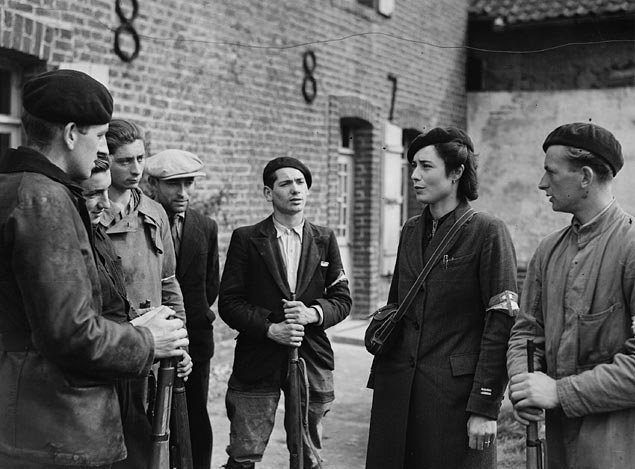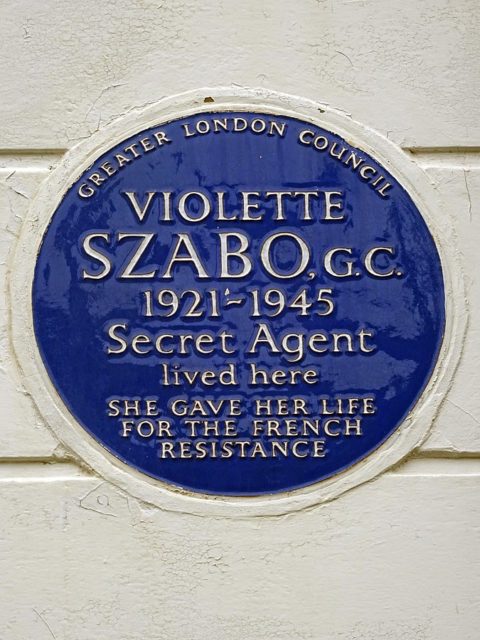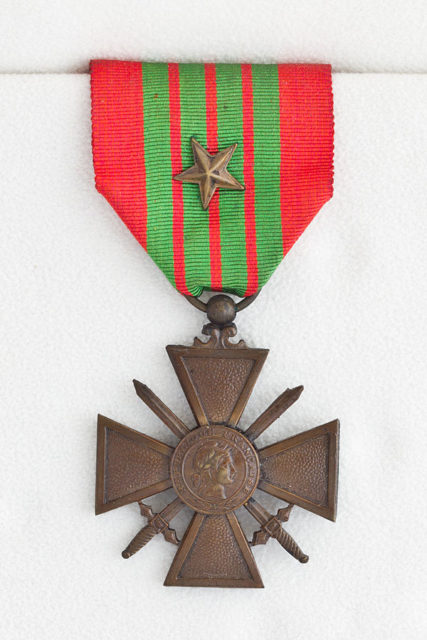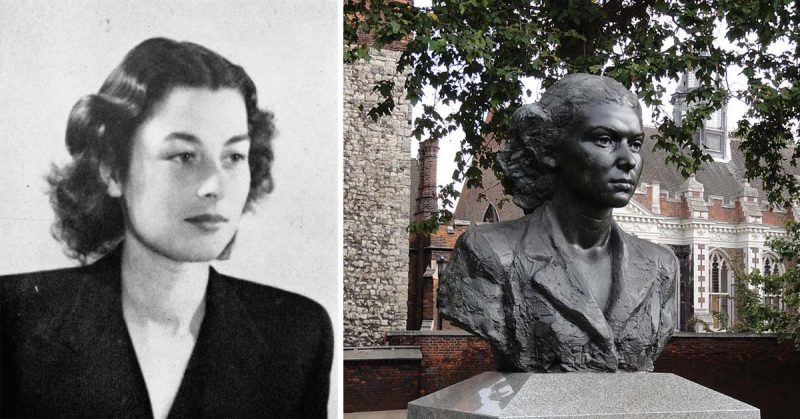War History Online presents this Guest Article from Raegan Oates
Violette Szabo is one of many brave women in British history and is remembered for her missions in the Second World War, with the Special Operations Executive. As a member of the select few elite of females, who took up arms learning the black arts of killing and sabotage during the conflict, she is listed on the Valencay SOE memorial as one of the SOE agents who died liberating France.
Only the second woman to be awarded the George Cross (one of only 4) for bravery, Violette was also awarded the Croix de Guerre by the French government in 1947 along with La Medaille de la Resistance in 1973.
Set up by Churchill in 1942, the SEO was a secret organisation ordered to ‘Set Europe ablaze.” In 1945, at the age of 23, Violette joined up and was parachuted into France on her second mission; where she was captured, tortured and brutally executed by the Germans. During her capture, she never yielded her secrets, taking them to her grave. She was a vital part of the war effort to thwart the enemy.
Born in Paris, on the 26th June 1921 to an English Father and a French Mother, Violette spent most of her childhood with an aunt. Aged 11, she eventually moved back to live with her parents in London. She settled quickly into her home at 18 Burnley Road and the house is now commemorated with a blue plaque. In the 1930’s, girls were expected to act as though they were made of ‘sugar and spice and all things nice.’ However, rebelling she learned how to fire a gun and became a crack shot. Her father taught her how to shoot and it’s reported that he would shoot apples off of the top of her head. Violette, at five feet tall, had the charm and strength of any man, excelled at athletics, gymnastics, and cycling. Educated in Brixton, she was a popular student and spoke French fluently.
In 1940, after a couple of shop jobs, she joined the Land Army. After that, she worked in an armament factory and was well on her way to ‘doing her bit.’ One day, after being asked by her mother to find a French soldier to celebrate Bastille Day with, she went out and returned with her soon-to-be husband Etienne Szabo – a French Officer. They married 6 weeks later. Violette went on to work as a telephonist at the GPO and Etienne returned to his duty in Senegal. In 1941 Violette joined the ATS.
However, she fell pregnant and gave birth to her daughter Tania on 8th June 1942. Following the birth, she went back to work in an aircraft factory. Sadly, her husband Etienne was killed 3 months after the birth of his daughter. He never got to meet her. Violette was devastated. Spurred on by the death of her beloved husband, she joined the SOE and became a field operator and courier. Plenty of women in the SEO had their own reasons for hating the Germans, and the death of her husband pushed Violetta into pursuing her career with the SEO.

Violette completed paramilitary training in Scotland and trained in Hampshire where she learned communications, cryptography, weaponry, uniform recognition and escape and evasion tactics. Learning how to jump out of a plane, she sprained her ankle on a training exercise. Although it healed, this injury became pivotal in her death in 1945.
Her first mission in France in 1944 was as a courier to Philippe Liewer, head of the SALESMAN circuit in Normandy. Violette had to make contact with missing members of the resistance and gather vital intelligence. She reported that over 100 French Resistance workers had been captured by the Gestapo and that their network had been destroyed. She also reported that it was too dangerous to continue with it. Successful in her mission, she returned safely home.
On 7th June, the day after D-Day her second mission began. She, Liewer and another agent parachuted into south-west France, near Limoges, to set up a new network with local resistance groups. Three days later, Violette with a resistance leader known as ‘Anastasie’ encountered German forces. Their car was stopped at a roadblock and a gun battle took place. Unknown to them, the 2nd SS Panzer Division “Das Reich” had been moving in their direction, on its way north towards Normandy. It was the decision to travel by car that cost her, her life. They were originally supposed to travel by bicycle but at the last minute decided to go by car as it was faster. When the car was stopped they abandoned it and made a run for the trees.

Violette’s ankle gave way on her (weakened by her twisting it on previous training) and her shoulder was grazed by a bullet. Before being captured she managed to kill a Corporal and wounded other soldiers. Violette was captured alive and Anastasie was able to escape. She was taken to Limoges Prison, where she was interrogated. then taken on to Paris. Finally, she was taken by train to Germany. On the way to Germany, the train was attacked by Allied forces. During the attack, Violette risked her life to take water to the Allied male prisoners.
Later that year, she was sent to Saarbrucken Transit Camp, located just inside the border of Germany. Ten days later, she was taken to Ravensbruck Concentration Camp. Ravensbrück camp exclusively for women. After this, she was taken to Torgau and finally returned to Ravensbruck where she was put into solitary confinement. Around February 5th, 1945 Violette Szabo was marched outside into the crematorium yard and was executed by a shot in the back of her head. She was listed as killed in action.

Violette’s story is one of extreme bravery and is an inspiration to people worldwide. Violette and Etienne are the most decorated married couple of World War II. In 2015 her George Cross went on sale and sold for £260,000 within a minute. It was bought on behalf of Lord Ashcroft and is currently on display at the Imperial War Museum. In her mission, she returned safely home.
